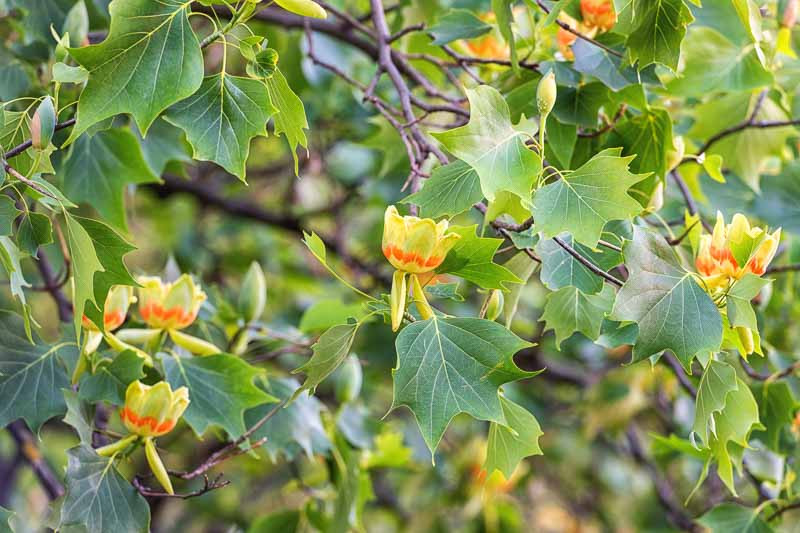Tulip Tree: A Magnificent Addition to the Landscape
The Tulip Tree, scientifically known as Liriodendron tulipifera, is a marvel of the arboreal world, offering aesthetic beauty and environmental benefits. Native to eastern North America, it belongs to the Magnolia family.
Habit: The Tulip Tree has a distinctive habit, growing pyramidal when young before maturing into a more oval-rounded form. With heights ranging between 70 to 90 feet (21 to 27 meters) and a spread of up to 40 feet (12 meters), this is not a tree for small gardens. Its grand size makes it a magnificent focal point in larger landscapes.
Hardiness: This magnificent deciduous tree is hardy in USDA zones 4-9, which makes it versatile for different climates.
Flowers and Bloom Time: One of the most captivating features of the Tulip Tree is its unique, tulip-shaped flowers. These yellowish-green blossoms, often marked with a touch of orange at the base, appear from late spring to early summer.
Foliage: The unique, four-lobed green leaves turn a brilliant yellow in autumn, adding stunning fall color to the landscape.
Uses: Given its size and the spread of its canopy, the Tulip Tree makes an excellent shade tree. It also serves as a beautiful specimen tree for parks and large gardens. The wood of the Tulip Tree is also highly valued for its light yet strong characteristics and is often used in furniture and construction.
Benefits: Beyond its ornamental qualities, the Tulip Tree is good for the environment. It is effective in carbon sequestration, helping to combat climate change. Its flowers attract various pollinators, such as bees, butterflies, and hummingbirds. It is also a significant host plant for several butterfly species, notably the Eastern Tiger Swallowtail. The Tree is generally considered non-toxic to humans and animals.
In summary, the Tulip Tree is more than just a pretty face; it’s a hardy, useful, and beneficial addition to any suitable landscape.

